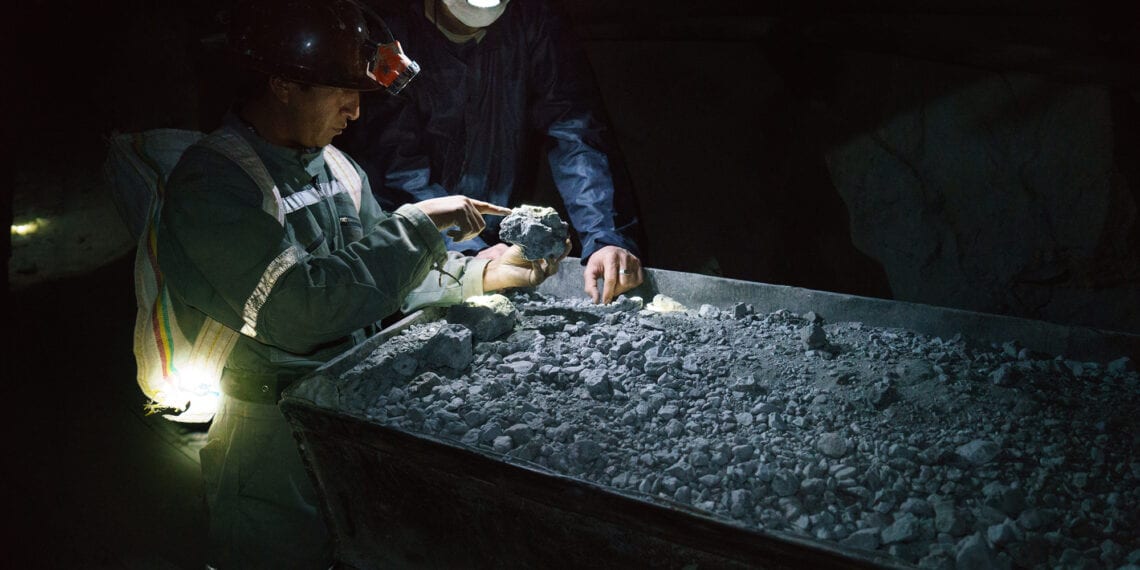As a “baby boomer” child, tin was a mainstay of your daily life. Tin cans, tin plates, tin hats, rubbish tins. Tin was everywhere. But then new materials were invented and tin sort of lost its shine.
But while it may never become the household mainstay of the 20th Century, tin is making an industrial comeback, as a key element in some of the world’s latest technology breakthroughs.
Background
According to the United States Geological Service (USGS), tin has been identified as one of the earliest metals known and used. Due to its unique ability to create a hardening effect when mixed with copper, tin was used in bronze implements as early as 3,500 BC. However, it was not until approximately 600 BC that the pure form of tin was used.
Today, according to the USGS, tin is mined in 35 countries throughout the world. However, it states that tin is a relatively scarce element with an abundance in the earth’s crust of about two parts per million (ppm), compared with 94 ppm for zinc, 63 ppm for copper, and 12 ppm for lead.
Industrial and clean energy applications
Currently, tin is mostly used as a protective coating or as an alloy with other metals such as lead or zinc. Its prime use is in coatings for steel containers, in solders for joining pipes or electrical/electronic circuits, in bearing alloys, in glassmaking, and in a wide range of tin chemical applications.
However, the International Tin Association (ITA) is confident tin is set to become a major player in a brave new world. According to a new study by Penn State University, substituting cobalt for tin can boost the conductivity and stability of micro-supercapacitors, with 92% capacity retained after 10,000 charge-discharge cycles.
It has been suggested that this battery-like technology could provide power for flexible and affordable wearable devices to monitor vital signs and spot health problems.
The Penn State team had used the abundant, inexpensive cobalt oxide to make up their supercapacitor electrodes. Cobalt oxide has a theoretically high capacity but when mixed with other materials, it reacts poorly and holds less energy.
The scientists ran computer simulations to see if swapping some cobalt for another metal would increase the amount of energy stored over time. By replacing some cobalt with tin and binding this new material to a graphene film, the team fabricated what they called a low-cost, easy-to-develop electrode. After 10,000 cycles of charging and discharging, their micro-supercapacitor could still hold 92% of the energy it could originally.
The ITA also recently released a report on the use of tin in lithium-ion batteries. The report suggested that tin’s use in LIBs could generate a demand surge of up to 60,000 tonnes a year by 2030.
Alongside lithium-ion-batteries, the ITA has identified a raft of potential new areas where tin can play a key role in the future, including next-generation batteries, green technologies, solar PV, thermoelectric materials, hydrogen generation, fuel cells, carbon capture catalysts and water treatment.
Recovering market demand
Of course, this increase in new market opportunities is creating strong demand.
According to Mordor Intelligence, the global tin market was estimated at over 360 kilo tonnes in 2020 and the market is projected to register a CAGR of over 2% during the period (2021-2026).
Mordor’s recent report, “Tin Market – Growth, Trends, COVID-19 Impact, and Forecasts (2021-2026)” found that the market was negatively impacted by COVID-19 in 2020. Automotive manufacturing units were on a temporary halt owing to the pandemic, which also lowered down the production of fuel tanks, sealants, nuts, bolts, radiator, roofing, and other parts, and thus created a negative impact on the tin market demand.
However, Mordor said the packaging industry gained momentum during the pandemic period and increasing use of tin in packaging of pharmaceutical and food and beverage items have, in-turn, stimulated market demand for tin.
Mordor forecasts that:
- Over the medium term, growing demand from the electronics industry and increasing housing construction activities in emerging economies of Asia-Pacific are driving the growth of the tin market
- Miniaturization of electronic products and the availability of substitutes like aluminium and tin-free steel to produce metallic products like containers, etc., are hindering the market’s growth
- New cheap tin-aluminium alloy in lithium-ion batteries, shifting focus toward recycling tin, and recovery in secondary refined tin output, are likely to create opportunities for the market over the coming years
- The Asia-Pacific region is expected to dominate the market and is also likely to witness the highest CAGR during the forecast period
Imports and exports growth
According to the ITA, a tight tin market has encouraged China to become an exporter of the metal. China’s trade of refined tin metal shifted into net exports in February, recent customs data shows.
The ITA report says China generally augments its significant domestic supply of metal with material from other producers. Much of the metal typically arrives from Indonesia; in January and February, imports from the country exceeded 1,000 tonnes. Compared to the two-month January-February period in 2020, total metal imports were up some 20%.
China imported some 75% of the metal in January. Just 459 tonnes entered the country in February, the lowest since August 2020. The metal trade between China and the rest of the world is dictated by the arbitrage – the difference between the LME price and the price of metal once imported into China. Over the last two years, the positive arbitrage has been strongly in the favour of imports.
The increase in demand and tin prices has understandably led a number of current and new producers to step up their development activities. However, the depletion of existing mine reserves and growing regulations have meant that global supply is unlikely to keep up with future demand.












